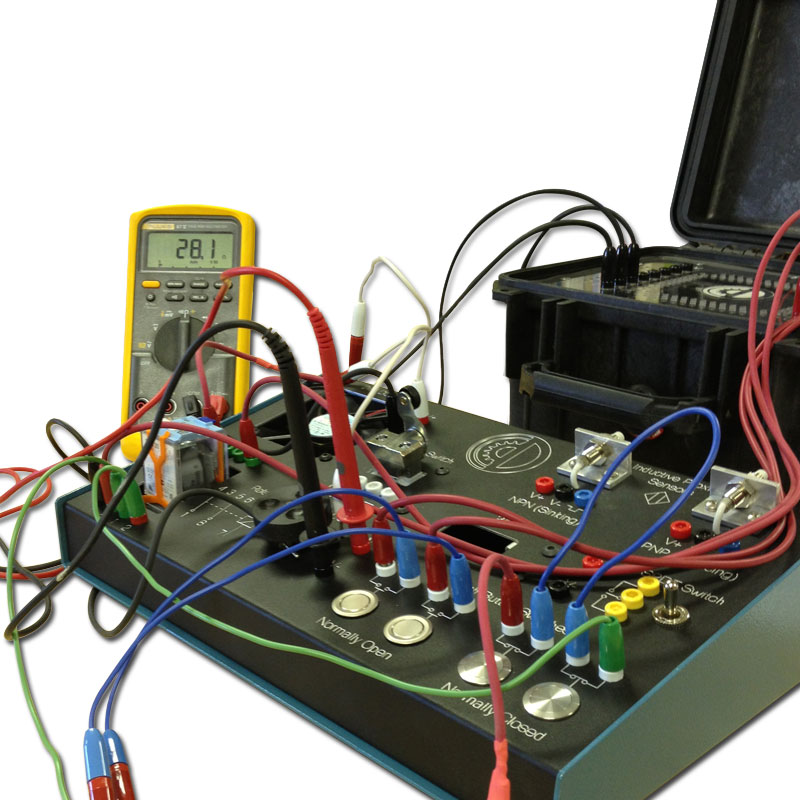Ensure total compliance through expert regulatory compliance assistance.
Ensure total compliance through expert regulatory compliance assistance.
Blog Article
Professional Solutions for Electrical System Troubleshooting and Fixings
Reliable fixing and repair service of electric systems call for a systematic approach, leveraging both progressed diagnostic devices and experienced expertise. Typical issues such as circuit overloads and malfunctioning circuitry demand immediate interest, yet the complexities of electrical systems can often cover the underlying troubles.

Common Electric Troubles
While electrical systems are developed for dependability, they can regularly encounter a range of typical troubles that might interfere with capability and security. One widespread problem is circuit overload, which occurs when too several gadgets attract power from a solitary circuit, resulting in stumbled breakers or blown fuses. technical support for electrical industry. This can not only hamper electrical performance but additionally pose a fire risk
An additional frequent problem is damaged circuitry, commonly because of age, wear, or inappropriate installation. Damaged or torn cords can cause brief circuits, leading to interruptions or electric shocks. Furthermore, loosened connections can trigger periodic power loss, developing irritating and potentially unsafe circumstances.
Ground mistakes are another issue, particularly in wet or wet atmospheres where electric tools is made use of. These faults can trigger significant safety threats, necessitating instant interest to make certain correct grounding and circuit protection.
Finally, flickering lights can show issues varying from overloaded circuits to defective light components. Identifying these typical electric issues is important for maintaining the honesty and safety of electrical systems, ensuring they run effectively and successfully. Attending to these issues quickly can avoid more serious difficulties and enhance overall system integrity.
Diagnostic Devices and Methods
Employing accurate analysis tools and methods is important for successfully identifying and settling electrical system problems. Various instruments assist in exact assessments, varying from simple multimeters to advanced oscilloscopes - technical support for electrical industry. Multimeters are basic for determining voltage, existing, and resistance, allowing service technicians to promptly pinpoint damaged components or links
Clamp meters are especially beneficial for measuring existing without interrupting the circuit, improving safety during diagnostics. For even more complicated troubleshooting, oscilloscopes permit the visualization of electric signals with time, offering insights into waveform anomalies that may suggest underlying issues.
In addition to these devices, infrared thermography is vital for detecting overheating parts, which can indicate impending failures. Insulation resistance testers better help in identifying jeopardized insulation, critical for preventing electrical hazards.
Methods such as aesthetic inspections, continuity tests, and circuit mapping are also integral to a reliable analysis process. By combining these tools and methods, specialists can establish an extensive understanding of electrical systems, ensuring accurate diagnoses and reliable repair work. Ultimately, leveraging the best diagnostic sources not only enhances repairing effectiveness but also contributes to the longevity and safety and security of electrical installments.
Step-by-Step Troubleshooting Guide

Following, make use of diagnostic tools mechanical system optimisation support such as multimeters and circuit testers to look for continuity, voltage, and present flow in the circuit. Beginning at the source of power, validating that it is functional, then map the circuit action by step, inspecting each component along the method. File your searchings for to keep clarity throughout the procedure.
As soon as you have actually recognized the malfunctioning part, isolate it from the circuit. Execute essential fixings or substitutes, ensuring that all electrical wiring and links are safe and secure. After addressing the issue, recheck the whole system to confirm that it operates appropriately.
Safety Safety Measures During Fixings
Ensuring safety and security during electrical fixings is vital to avoid crashes and injuries. Prior to commencing any type of job, it is necessary to switch off the power supply at the breaker and confirm that the circuit is de-energized making use of a trustworthy voltage tester. Individual safety devices (PPE), including protected gloves and safety and security goggles, need to be worn to mitigate the risk of electric shock and eye injuries.
In addition, maintaining a clutter-free workspace is essential. Make certain devices remain in great problem and proper for the tasks available. Making use of devices with shielded handles can further boost security. It is also essential to avoid servicing electrical systems in wet or moist conditions, as dampness dramatically boosts the risk of electric shock.
Safe and secure loosened garments and connect back long hair to avoid any type of complication with electrical elements. Familiarize on your own with the details electric codes and policies appropriate to your location to ensure compliance and safety throughout the repair work process.
When to Call a Professional
While safety and security precautions are important for any kind of electrical repair work, there are situations where the complexity or extent of the work demands the proficiency of an expert electrician. Home owners should be especially cautious when dealing with problems that involve circuit breakers, electrical panels, or the primary power supply. Any kind of indications of electric fires, such as burned smells or flickering lights, warrant prompt specialist interest.
Furthermore, if you come across consistent tripping of circuit breakers or constant electric surges, these might suggest underlying problems that require specialized analysis devices and knowledge. Tasks that require extensive rewiring, installment of brand-new circuits, or links to high-voltage systems need to always be entrusted to certified electricians, as improper handling can cause serious dangers.
Furthermore, regulative conformity is crucial in electric job. Specialists are familiar with neighborhood codes and sites laws, guaranteeing that all repairs satisfy security criteria. Finally, if you're ever unsure about your abilities or the severity of the issue, err on the side of care and seek advice from a qualified helpful resources electrical contractor. Prioritizing security and integrity will inevitably secure both your residential or commercial property and health.
Conclusion
In verdict, effective fixing and repair work of electric systems require a methodical technique, leveraging sophisticated analysis tools and adherence to security precautions. By determining typical electric problems and using an organized troubleshooting guide, several issues can be dealt with efficiently.
Report this page